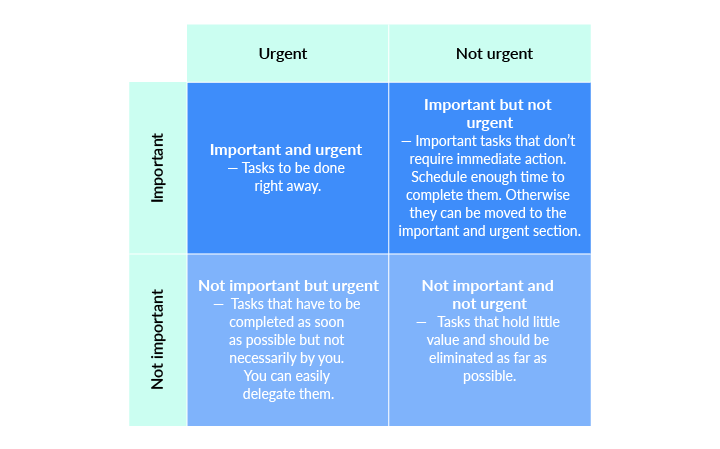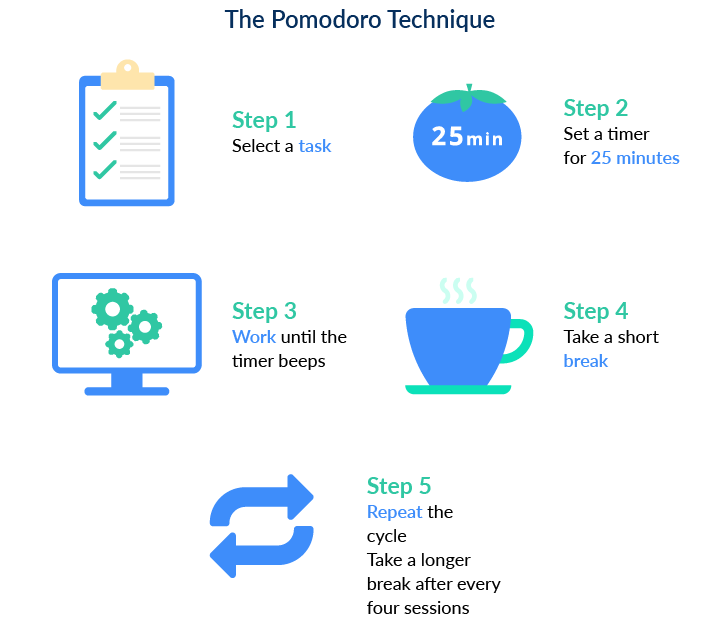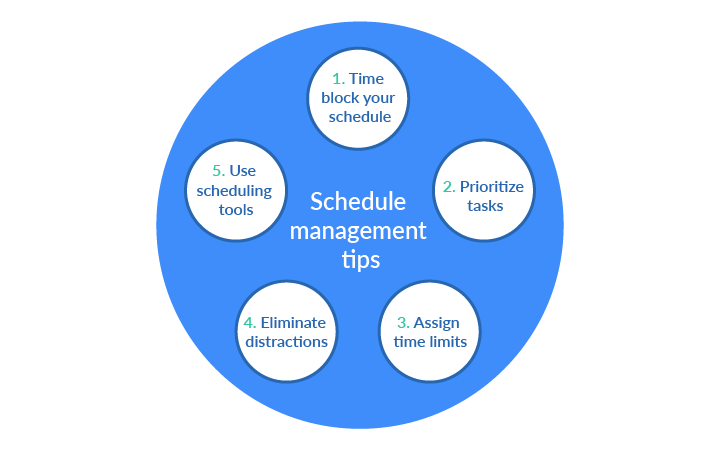
Another busy day is over and you’re finally home. You got down to work early, did a lot of things but feel unsatisfied. Urgent tasks, endless interruptions, constant time conflicts, and rescheduling… You feel like you were busy all day but made no progress on critical tasks.
Effective scheduling is critical to achieving business goals. An adequately established schedule enables you to move faster from task to task. We provide 5 helpful tips on how to manage your work schedule to complete more tasks and feel more satisfied. Read on.
1. Block time for tasks
Plan whatever you need to fulfill. The idea is to break your task list into blocks and put your activities in them. Specify how much time every single activity takes and rank activities by priority. It’s also significant that you do only those tasks that are planned. Strictly stick to your schedule. Use any online calendar that’s convenient for you (Google, Apple, Outlook, etc.) to work out your plan.
It would be wise to plan your activities beforehand for a strong start of the day. By getting prepared the night before, you’ll feel calmer and more confident. Besides, you’ll get a good night's sleep and have a lower stress level.
We highly recommend that you schedule your most significant routine tasks. Planning repeated tasks enables you to fulfill them with maximum efficiency. Examples of such tasks are going to the swimming pool at 5 pm on Mondays and Wednesdays, having a driving lesson on Tuesday nights, or going shopping every Thursday. Routine tasks make scheduling easier, as you can start by blocking times for them on your calendar and plan other activities around them.
2. Prioritize tasks
Effective scheduling isn’t about getting lots of tasks fulfilled but rather about identifying critical tasks and getting them completed. You can get many things done but still have an ineffective workday. Selecting the most significant activities for each day and ranking them by importance works best.
To be more productive, try to plan the most complicated tasks in the morning when you are full of energy. It’s the so-called “eat the frog” technique. In fact, that’s a time management approach based on Mark Twain’s famous quote.

Use the Eisenhower Matrix in order to prioritize activities. Put your tasks into four quadrants according to whether they’re urgent, important, both, or neither.

Remember that tasks tagged as important are essential for your long-term objectives, while those tagged as urgent may not be. However, they require your immediate action.
3. Assign time limits
Setting time limits for tasks is another helpful way to manage your work schedule. Preparing a must-do list makes no sense until you set a steady pace for your workflow. With the so-called Pomodoro Technique, you can accomplish more tasks. All you need to do is break your task list into short intervals (called “Pomodoros”) and space them by short breaks. Such an approach helps you stay concentrated, encourages your creativity, and boosts motivation.
The traditional approach implies breaking a task list into 25-minute chunks with short (two- or three-minute) breaks after each. Also, you should take a longer break (15 to 30 minutes) after four sessions (Pomodoros).

Buffer times are extremely important. Make them part of your schedule to take some rest.
In addition, schedule contingency time. Stuff happens, so ensure you leave enough unscheduled space to manage emergencies or contingencies. It may be difficult to predict how much contingency time may be necessary. You’ll be able to learn that over time by trial and error. To begin with, follow a simple rule: The more unpredictable your task is, the more extra time you should schedule.
Also, schedule discretionary time. You can use it for many purposes - to review your to-do list, get prepared for upcoming activities, check your email, work on non-urgent items, etc.
4. Eliminate workplace distractions
According to Gloria Janet Mark’s study on workplace interruptions, it takes an average of 23 minutes and 15 seconds to refocus on a task after being distracted. As you might have guessed, distractions can affect a business’s bottom line. Reducing workplace distractions leads to higher productivity and increased motivation. This is supported by statistics from the 2018 Workplace Distraction Report by Udemy.
As a result of reducing distractions, Udemy found that:

5. Use scheduling tools
Technology can significantly change how you manage your schedule. Consider using scheduling solutions to automate the entire scheduling process. You can read our article on what scheduling software is to learn how it can improve your scheduling process and efficiently manage your time. Scheduling software can bring you multiple benefits:
- Time savings, allowing you to focus on high-value tasks, enhance productivity, and consequently grow your business faster
- Convenience for you and your customers as you can manage your schedules from any location and on any device
- Greater client satisfaction
- Fewer no-shows due to embedded automated reminders
- Elimination of inconsistencies like overbooking and last-minute cancelations
- Ability to stay up-to-date with your activities and not miss anything important
- Money savings as you won’t need a receptionist
How poor schedule management affects you
Poor schedule management can have a detrimental effect on your work in general. Let’s see how.
- Poor quality. With poor scheduling, you’re likely to sacrifice quality for speed. Besides, you may find there’s never enough time to get all of your tasks done. This can result in mistakes or low quality of work.
- Missed deadlines. You’re likely to miss deadlines for critical tasks when you’re performing too many tasks at once. So having a realistic prioritized schedule is extremely important.
- Procrastination. This is the most obvious result of poor scheduling. If you lose control over your schedule, you’re quite likely to end up doing everything at the last moment and getting nervous.
- Low productivity. Poor schedule management can lead to jumping between activities and get easily distracted by constant interruptions and contingencies.
- Low motivation and burnout. Poor schedule management can result in your feeling demotivated, as you see no progress even when you’re constantly busy.
- Higher stress levels. With no clear understanding of what tasks you have to fulfill next, you can suffer from losing control over your workflow. Besides, you’re quite likely to have a fear of missing some significant top-priority tasks. This inevitably results in stress and dissatisfaction.
- Poor work–life balance. Without properly scheduled work-related and personal activities and tasks, you can find yourself missing both a chance to relax and an opportunity to grow your business.

Wrapping up
Effective scheduling is critical to feeling more satisfied and motivated. This also allows you to efficiently manage your time. Scheduling software can drastically change your approach to scheduling and help you attain your goals.
To learn more on effective scheduling, read our article on basic features and benefits of scheduling software.
